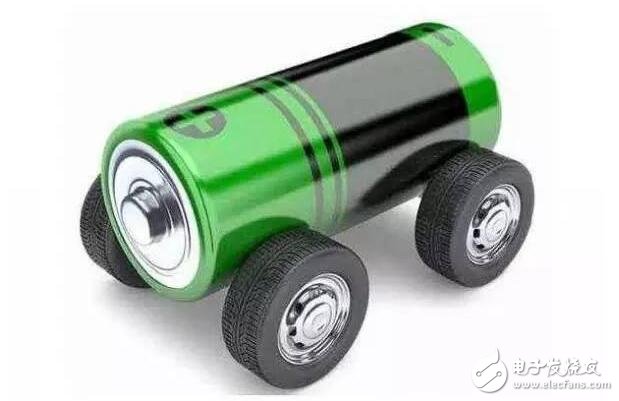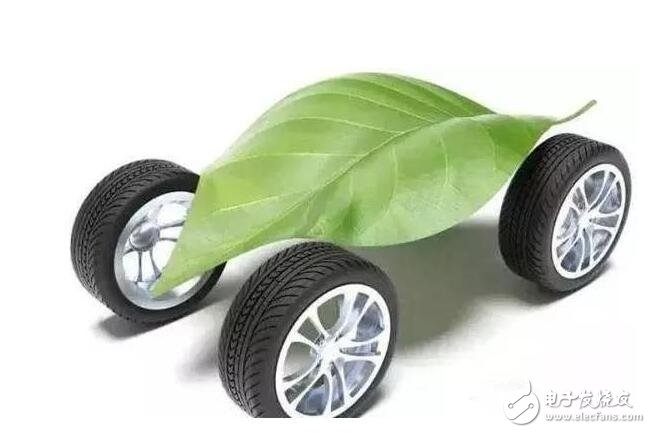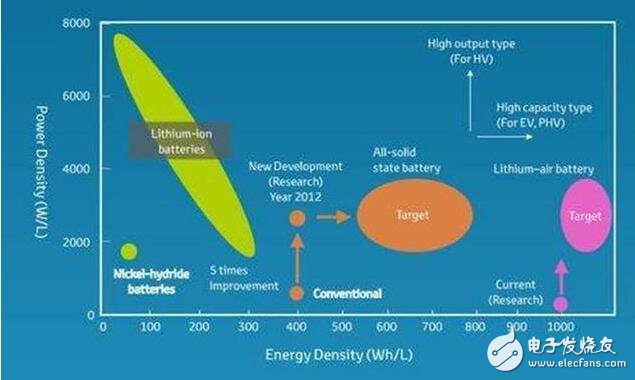
Privacy statement: Your privacy is very important to Us. Our company promises not to disclose your personal information to any external company with out your explicit permission.
In the past few years, with the rapid growth of new energy vehicle production and sales, China's power battery industry has made great progress. The core component of a new energy vehicle is the vehicle's power battery, which is the energy source of the new energy vehicle, which directly determines the cruising range of the car.
China's power battery market is dominated by local enterprises, and the enterprise structure is stratified. According to the technical level and market performance, it is divided into four echelons. The first echelon enterprises are leading in technology in BYD and Ningde era, and the scale effect leads to significant cost reduction. Take the absolute advantage.
The ternary battery and lithium iron phosphate battery are the leading applications in the passenger car and commercial vehicle fields. At present, the passenger car battery is mainly ternary, and the commercial vehicle battery is mainly lithium iron phosphate battery.
Classification of new energy batteriesFirst, lead acid battery
As a relatively mature technology, lead-acid batteries are still the only batteries for electric vehicles that can be mass-produced because of their low cost and high rate discharge. At the Beijing Olympics, there were 20 electric vehicles using lead-acid batteries to provide transportation services for the Olympic Games.
However, the specific energy, specific power and energy density of lead-acid batteries are very low, and electric vehicles using this as a power source cannot have good speed and cruising range.
Second, nickel-cadmium battery and nickel-hydrogen battery
Although the performance is better than that of lead-acid batteries, it contains heavy metals, which can cause environmental pollution after being abandoned.
Ni-MH power battery has just entered a mature stage. It is the only battery system in the battery system used in hybrid vehicles that has been verified and commercialized and scaled. The current market share of hybrid batteries is 99% nickel-hydrogen battery, commercial The representative of the chemical is the Toyota Prius. At present, the world's major automotive power battery manufacturers mainly include Japan's PEVE and Sanyo. PEVE occupies 85% of the global Hybrid Ni-MH battery for power vehicles. Currently, the main commercial hybrid vehicles such as Toyota's Prius, Alphard and EsTIma, And Honda's Civic, Insight, etc. all use PEVE's nickel-hydrogen battery pack. In China, Changan Jiexun, Chery A5, FAW Pentium, GM Junyue and other brand cars have been in demonstration operation. They also use nickel-metal hydride batteries, but the batteries are mainly purchased from abroad, and domestic nickel-hydrogen batteries are used in automobiles. Still in the R&D matching phase.
Third, lithium battery
Traditional lead-acid batteries, nickel-cadmium batteries, and nickel-hydrogen batteries are relatively mature in their own technology, but they are used as power batteries in automobiles. At present, more and more car manufacturers choose to use lithium batteries as the power battery for new energy vehicles.
Because lithium-ion power battery has the following advantages: high working voltage (three times that of nickel-cadmium battery hydrogen-nickel battery); large specific energy (up to 165WH/kg, which is three times that of hydrogen-nickel battery); small size; light weight Long cycle life; low self-discharge rate; no memory effect; no pollution.
Many well-known automakers are currently developing power lithium battery vehicles such as Ford, Chrysler, Toyota, Mitsubishi, Nissan, Hyundai, Courreges, and Ventury. Domestic automakers such as BYD, Geely, Chery, Lifan and ZTE have also installed power lithium batteries in their hybrid and pure electric vehicles.
The bottleneck that currently hinders the development of power lithium-ion batteries is: safety performance and management systems for automotive power batteries. In terms of safety performance, lithium-ion battery has high energy density, high operating temperature, harsh working environment, and people-oriented safety concept. Therefore, users have very high requirements for battery safety. In the management system of the automobile power battery, since the working voltage of the automobile power battery is 12V or 24V, and the operating voltage of the single power lithium ion battery is 3.7V, it is necessary to increase the voltage by connecting a plurality of batteries in series, but it is difficult to implement the battery. Fully uniform charge and discharge, thus causing a single battery in a series of battery packs to be charged and discharged unbalanced, the battery will be undercharged and over-discharged, and this situation will lead to a sharp deterioration of battery performance, and ultimately As a result, the entire battery can not work properly, or even scrapped, which greatly affects the service life and reliability of the battery.
Fourth, lithium iron phosphate battery
Lithium iron phosphate battery is also a kind of lithium battery, which has less than half the energy of lithium cobalt oxide battery, but its safety is high, the number of cycles can reach 2000 times, the discharge is stable, and the price is cheap, which becomes a new choice for vehicle power.
BYD's "iron battery", the industry believes that it is more likely to be a lithium iron phosphate battery.

Five, fuel cell
Briefly, a fuel cell is a power generation device that directly converts chemical energy present in a fuel and an oxidant into electrical energy. Fuel and air are fed into the fuel cell separately, and the electricity is wonderfully produced. It looks like a positive and negative electrode and electrolyte, like a battery, but in essence it can't "storage electricity" but a "power plant."
The most promising for automobiles is the proton exchange membrane fuel cell. Its working principle is: sending hydrogen to the negative electrode, through the action of the catalyst (platinum), two electrons in the hydrogen atom are separated. Under the attraction of the positive electrode, the two electrons generate electricity through an external circuit, and the electrons lose electrons. Ions (protons) can pass through the proton exchange membrane (ie, the solid electrolyte), recombining with the oxygen atoms and electrons into water at the positive electrode. Since oxygen can be obtained from the air, as long as hydrogen is continuously supplied to the negative electrode and water (steam) is taken away in time, the fuel cell can continuously supply electric energy.
Because the fuel cell directly converts the chemical energy of the fuel into electrical energy, without passing through the combustion process, it is not limited by the Carnot cycle. At present, the fuel-electric energy conversion efficiency of a fuel cell system is 45% to 60%, while the efficiency of thermal power generation and nuclear power is about 30% to 40%.

“In the past year, the electric vehicle industry is transforming into high-quality development, and the situation is very gratifying.” On January 7, on the eve of the China Diaoyutai Forum for Electric Vehicles, Chen Qingtai, chairman of the China Electric Vehicle 100-member Association, accepted 21 Century Economic Report reporter said in an interview.
The main performance of the high-quality development transformation is: positive development has almost completely replaced reverse development, innovation capability has continued to improve, and the overall technical level has reached a big step; the acceptance of electric vehicles in users and the market has increased rapidly; the main products From the middle and low-end to the middle and high-end, some have already proposed to target high-end cars and luxury brands.
At the same time, when the world's major auto companies are scrambling to announce the transition to electric vehicles, the industrial system of electric vehicles in China is gradually improving. The main components, especially the power batteries, have always maintained a world-class level, and the main components and supporting capabilities have improved. quickly.
Cost-effective super fuel car
In 2017, the cumulative sales of new energy vehicles in China from January to November was 609,000 units, a year-on-year increase of 51.4%. It is only one step away from the annual goal of completing 700,000 units. Some experts predict that the sales data for December has not yet come out, but the total sales of new energy vehicles in 2017 may exceed 800,000.
"The development of electric vehicles will go beyond a critical point. The cost performance of electric vehicles will reach and exceed that of fuel vehicles. If this hurdle is crossed, electric vehicles can develop independently based on market forces. Now it depends on policies and government. Subsidy. Chen Qingtai told reporters that after the financial subsidies were completely abolished, the double-point policy as an alternative policy, the proportion of new energy vehicles will continue to increase on the basis of 12% in 2020.
When will this threshold appear? Chen Qingtai’s judgment is about 2025.
In this regard, Chen Qingtai suggested that car companies should be prepared in the following aspects: First, after the financial subsidies have subsided, they will do a good job in ensuring sustainable development. In addition, electric vehicles themselves must improve their cost performance through light weight and energy conservation; Secondly, product technology needs two-line operations. One of the front lines is to improve the driving function of the car. The other is to apply intelligent network connection and sharing to new energy vehicles. Third, automatic driving is a commanding height for the future; Fourth, we must pay close attention to brand building in a limited time.
At the same time, with the deep integration of the automotive industry with new technologies such as electrification, intelligence, and information technology, a large number of new power-making companies have emerged in China. From following to affecting the world, the Chinese automobile industry is emerging from a big automobile country. The road to a car power.
"To really stand on the ground in electric vehicles, or to do our own characteristics, if you rely solely on electrification, it is not a good thing. It is harder to do better than traditional cars. But if you are networked, intelligent, shared, etc. If you can force your strength, it is entirely possible to win, because this is our strength. I very much hope that Internet companies will enter the electric vehicle industry in a big way, share this cake and change the genes of traditional cars." Chen Qingtai said.
However, Ouyang Minggao, executive vice president of China Electric Vehicles 100, stressed that although the core technology of electric vehicles is usually battery, motor and electronic control, for OEMs, they are more of a brand and technology. Integration of marketing services.
Compared with traditional cars, this is particularly evident in electric vehicles, and the gap between Chinese automakers and foreign automakers is more manifested in the overall power consumption. "Nissan's new generation of listening winds, running more than 300 kilometers in 40 degrees under European conditions, can even run to 400 kilometers under Japanese conditions. The gap between our national car companies and them is still relatively large." Ouyang Minggao Tell the reporter.

Power battery has a big breakthrough in energy
Ouyang Minggao also said that in 2017, China's power battery technology has made substantial progress. The energy density of the power battery system has reached 150 watt-hours/kg or more. The lithium-ion power battery unit is expected to achieve 300 watts by 2020. Time/kg target.
On March 1, 2017, the Ministry of Industry and Information Technology, the National Development and Reform Commission, the Ministry of Science and Technology, and the Ministry of Finance issued the “Action Plan for Promoting the Development of Automotive Power Battery Industry” (hereinafter referred to as the “Action Plan”), which proposed the main goal of power battery development to 2020. In the year, the specific energy of the new lithium-ion battery unit exceeds 300 watt-hours/kg; the system's specific energy strives to reach 260 watt-hours/kg, the cost is reduced to below 1 yuan/watt hour, and the use environment is -30 °C to 55 °C. With 3C charging capability. By 2025, the new system's power battery technology has made breakthroughs, with a monomer specific energy of 500 watt-hours/kg.
"At present, technology research and development at home and abroad is basically at the same level, but the core of lithium-ion batteries is safety." Ouyang Minggao said that in the special research of new energy vehicles, Ningde Times New Energy, Tianjin Lishen, Hefei Guoxuan have achieved Larger technological breakthroughs.
It is understood that the energy density of the power battery cells in Ningde era has reached 304 watt-hours/kg, the cycle life is basically around 1000 times, and the safety tests are all passed. In addition, the cycle life and energy density of Lishen and Guoxuan team are different from the target requirements. Few.
However, the development of China's power battery technology is not balanced. Ouyang Minggao told reporters that the current research on power battery in China can be summarized into four aspects: First, the specific energy of 300 watt-hours/kg of monomer can be industrialized in 2020, but the safety should be strengthened; The two new types of targets, lithium-sulfur and lithium-air batteries, are currently relatively slow at home and abroad. No breakthroughs have been seen in 2017. Third, the industrialization of solid-state batteries continues to heat up, but the solid/solid interface is stable. Sexuality and metal lithium negative electrode chargeability constraints, the real all-solid lithium metal negative battery is not yet mature, but the lithium-ion battery with inorganic sulfide as a solid electrolyte breakthrough; fourth is China's high-capacity lithium-rich positive electrode In terms of materials, some breakthroughs were made in 2017. The innovative lithium-ion battery based on high-capacity lithium-rich positive electrode and high-capacity silicon-carbon negative electrode is more feasible than lithium-sulfur and lithium-air battery.
According to this judgment, in 2020, the energy density of China's power battery cells will reach 300 watt-hours/kg, the specific power will reach 1000 watt-hours/kg, the cycle will be more than 1000 times, and the cost will be less than 0.8 yuan/watt-hour; 2020-2025, power The energy density of the battery cells can be increased from 300 watt-hours/kg to 400 watt-hours/kg, and the cost per watt-hour is reduced from 0.8 yuan to less than 0.6 yuan.
"In 2025, the reasonable mileage of a pure electric car with a general price/performance ratio is 300-400 km. But in 2030, the biggest technological breakthrough will be reflected in the electrolyte. The solid-state battery will be industrialized in scale, and the battery cell is expected to hit 500 watts. Time/kg. In 2030, the regular cost-effective model, the cruising range should be more than 500 kilometers." Ouyang Ming Gao said.
The latest breakthrough in automotive battery technologyNot long ago, a patent message issued by Fisker Motors of the United States attracted worldwide attention. It developed a solid-state battery that can increase the battery life of EV to 804 km with only 1 minute of charging time. In 2020, the cost of materials and manufacturing technology has reduced the cost to one-third of conventional lithium batteries.

Solid-state batteries have thus entered the field of view of most people. In fact, they are the same as the current liquid lithium batteries. The biggest difference is that the electrolyte becomes solid, and more charged ions are concentrated by density and structural advantages. At one end, more current can be conducted, and the battery capacity is greatly increased.
The most notable features of solid-state batteries are two. One is the high energy density. Many laboratories have already achieved 300-400Wh/kg, which is 2.5-3 times that of traditional lithium batteries. In addition, it is safer and more eliminated. Burning hazards caused by accidents such as cracking or high temperatures.

Of course, solid-state batteries also have shortcomings, that is, the overall conductivity is low, the internal resistance is large, and the charging speed is slow. As for how the American Fisker car can charge for 1 minute and last for 800 kilometers, it is its core secret.
In general, if solid-state batteries can be truly low-cost industrialized and market-oriented, it will completely solve the core problem of the current popularity of electric vehicles, and new energy vehicles will truly kill gasoline vehicles.
October 28, 2024
September 11, 2024
October 27, 2022
September 20, 2022
July 29, 2024
July 29, 2024
이 업체에게 이메일로 보내기
October 28, 2024
September 11, 2024
October 27, 2022
September 20, 2022
July 29, 2024
July 29, 2024

Ms. LISA CHEN
전화 번호:
+86-0755-28346529
Fax:
E-mail:
모바일 사이트


Privacy statement: Your privacy is very important to Us. Our company promises not to disclose your personal information to any external company with out your explicit permission.

Fill in more information so that we can get in touch with you faster
Privacy statement: Your privacy is very important to Us. Our company promises not to disclose your personal information to any external company with out your explicit permission.